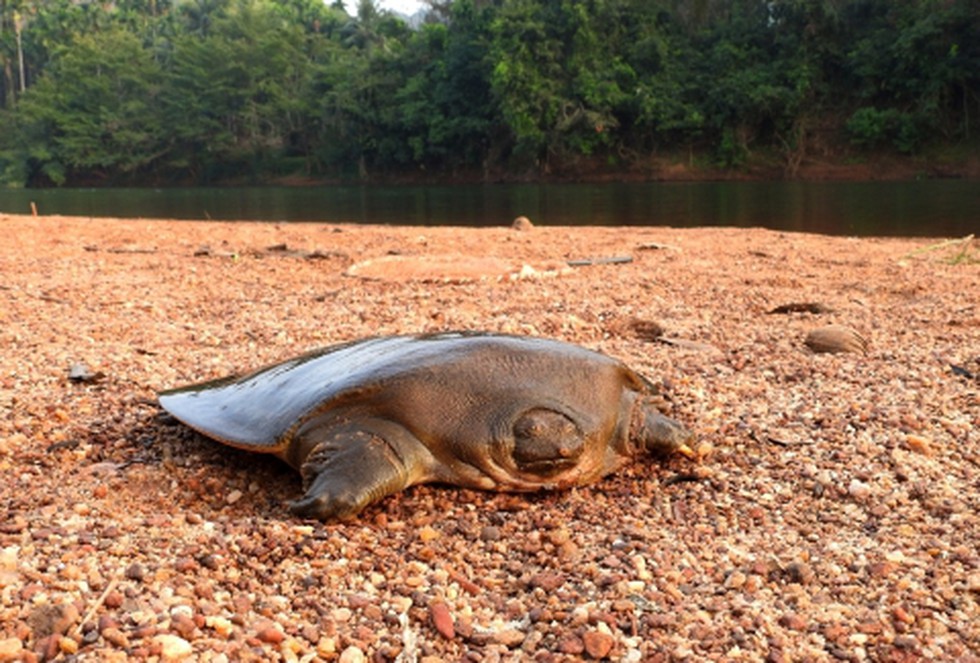The Cantor’s giant softshell turtle (Pelochelys cantorii) has been discovered nesting in India, a groundbreaking find for conservationists.
Rarity and Conservation Status
- The Cantor’s giant softshell turtle is incredibly rare and native to South and Southeast Asia.
- It faces threats from habitat destruction and overharvesting, leading to its classification as Critically Endangered on the IUCN Red List.
Engagement with Local Communities
- Conservationists engaged with local communities living near the Chandragiri River in Kerala, India.
- Through interviews and collaboration, they gathered crucial information about the turtle’s habitat and behavior.
Nesting Evidence and Conservation Efforts
- The collaboration led to the documentation of female nesting and the rescue of eggs from flooded nests.
- Hatchlings were released into the river, contributing to the conservation effort.
Study and Publication
- The study, led by multiple institutions including the University of Portsmouth and Zoological Society of London, was published in the journal Oryx.
Implications and Future Plans
- The findings underscore the importance of local knowledge in conservation science.
- The establishment of a local alert network represents a pioneering approach for real-time insights and immediate conservation action.
- Plans for a community hatchery and nursery are underway, demonstrating a commitment to long-term conservation efforts.
Multiple Choice Questions (MCQ):
- What is the conservation status of the Cantor’s giant softshell turtle?
- A) Endangered
- B) Vulnerable
- C) Critically Endangered
- D) Near Threatened
- Answer: C) Critically Endangered
- Where was the nesting evidence of the Cantor’s giant softshell turtle discovered in India?
- A) Ganges River
- B) Yamuna River
- C) Chandragiri River
- D) Brahmaputra River
- Answer: C) Chandragiri River
- Which approach did conservationists use to gather information about the turtle’s habitat and behavior?
- A) Satellite tagging
- B) Camera trapping
- C) Engaging with local communities
- D) Setting up research stations
- Answer: C) Engaging with local communities
- In which journal was the study about the discovery of the Cantor’s giant softshell turtle published?
- A) Nature
- B) Science
- C) Oryx
- D) Conservation Biology
- Answer: C) Oryx
- What is one future plan mentioned in the article for the conservation of the Cantor’s giant softshell turtle?
- A) Establishment of satellite monitoring
- B) Setting up community hatchery and nursery
- C) Implementing stricter fishing regulations
- D) Translocating turtles to safer habitats
- Answer: B) Setting up community hatchery and nursery
